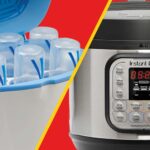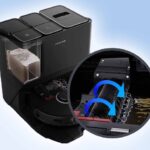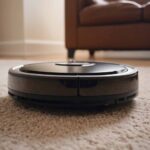There are many items in our home that we frequently use, but don’t think about cleaning it during our regular cleaning routine.
When it comes to the cold and flu, many people take minimal preventive measures in regard to the things they touch. With the typical cold, We catch it, get sick, then get better. Or we go to our local pharmacy and pick up over the counter cold and flu medication.
We’re living in the midst of one of the deadliest versions of the coronavirus(COVID-19) in history.
We must take extra precautions to protect ourselves and the people around us. One way we can do that besides social distancing and washing our hands is by cleaning the items we touch.
COVID-19 has everyone on high alert! People are more cautious than ever before of getting sick.
Some materials contribute to the growth and spread of viruses on the surface of objects. The type of material also affects the time viruses can survive on the surface of it.
Depending on the type of virus, it can thrive anywhere from a few hours to a few weeks.
According to CDC estimates, influenza has resulted in between 9 million – 45 million illnesses, between 140,000 – 810,000 hospitalizations and between 12,000 – 61,000 deaths annually since 2010.
One of the primary sources of transmission of COVID-19 is the objects you touch!
In this article, I like to discuss objects you frequently touch that should be sanitized to help prevent the spread of bacteria and viruses.
Sanitizing Your Mobile Devices
Mobile devices have become an integral part of our lives. It’s hard to imagine waking up in the morning and not reaching to check your messages with one squinty eye open.
According to Wikipedia, a mobile device (or handheld computer) is a computer small enough to hold and operate in your hand. These devices are typically mobile phones and tablets.
These devices stay glued to our hips and go everywhere we go. According to a study done by research firm Dscout The average person touches his or her phone 2,617 times every day! This same study also found that heavy users touch their phones more than 5,400 times a day!
It’s easy to understand how your mobile device can come in to contact with unwanted bacteria. And it’s not just mobile phones it’s tablets too. So before you hand that tablet to your kids to keep them distracted, give it a good wipe down. The same goes for your mobile phone.
If your mobile device is in a case, remove it. Completely wipe the case down and your mobile phone separately.
Use 70-percent isopropyl alcohol to wipe each item. Set the items down and let it dry.
Sanitize TV Remotes
The TV remote is less personal than a mobile device. It comes in to contact with many hands within your household. Germs and debris can become lodged around buttons and in crevices.
Use 70-percent isopropyl alcohol to wipe as much as the surface as possible. Follow up with a Q-tip to get in between the buttons.
You might need first to wipe it with a bit of soap and water to dislodge any caked-on debris. Make sure your cloth is not too damp. Ring out as much water as you can.
Sanitize Light switches
If you don’t have smart lights with voice-controlled light switches, this section falls under the category of frequently touched household items.
Depending on how many light switches you have, it doesn’t take very long to go around your home and clean your light switches.
Some light switches and plates might have a build-up of oil, dirt, and food debris from your hands. 70-percent isopropyl alcohol will help break down the dirt, disinfect and leave the surface looking clean.
De-germ your Doorknobs
Your typical every day handles can be hotspots for bacteria! It takes no time at all going around your home, cleaning your doorknobs.
You might want to start with soap and water to remove the initial filmy layer of built-up dirt and oils that came from your hands. Then wipe the doorknob with 70-percent isopropyl alcohol.
If you have other people living in your home, then cleaning your doorknobs is essential. More so, if the people in your household have a job that requires them to be outside the home.
Sanitize Your Car Door handles
Just like doorknobs in your home, car door handles can come in to contact with bacteria quite frequently.
Keep disinfectant wipes in your car so you can give your car door handle a wipe anytime you need to. Make sure to wipe your outer and inner handles. Wipe behind your handles too.
Sanitize Your Wallet and Cards
When you think of a household item, I don’t think wallets come to mind. But wallets do reside in your home and are frequently touched without consideration to clean the surface. When is the last time you cleaned your wallet’s surface?
Leather wallets are a bit easier to clean due to its smooth surface. Fabric wallets can be a bit challenging to wipe. Putting 70-percent isopropyl alcohol in a spray bottle and spraying the surface of your wallet is ideal. Then give it a gentle wipe.
I use 70-percent isopropyl alcohol to wipe my leather wallet down from the inside out. I remove all the plastic cards I used that day and also wipe them down.
I know it may seem a bit overkill and tedious, but staying healthy in these times is crucial! I’m no leather expert, so wipe your wallet with alcohol at your own risk.
I’ve wiped my 10-year-old black leather tumi wallet with alcohol. Some of the black dye from the wallet does come off.
I know you can potentially ruin your wallet. You can always buy another wallet, so why put a dollar sign on my health.
Also, there are wallet treatment solutions in the market to help restore color and texture.
Sanitize Your Faucets
You might think faucets might not get germs because it’s where you wash up. Think about it, what’s the first thing you do before you wash your hands?
You have to turn the faucet on. The germ that’s already on your hands before you wash it will make its way to the surface of faucets.
Using a good cleaning solution will help dramatically reduce the spread of germs.
Clean and Sanitize Your Keyboard
Your keyboard can hold a treasure trove of bacteria! Cleaning is essential for reducing the spread of bacteria.
You might think your hands are clean after washing them, but once you touch your keyboard, the residing bacteria will get on your hands again.
Start off by holding your keyboard upside down and giving it a good shake to dislodge the debris. You might want to shake it over a cloth or bag to prevent debris from falling on the surface on your desk.
Use a damp cloth with a good cleaning solution and wipe as much of the keyboard surface as you can. Then go in between each of your keys with a Q-tip and 70-percent isopropyl alcohol.
This article has been reviewed by our editorial board and has been approved for publication in accordance with our Editorial Policies.







